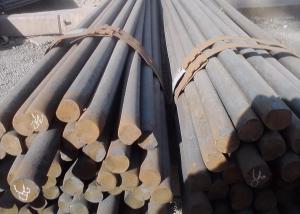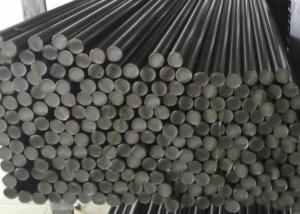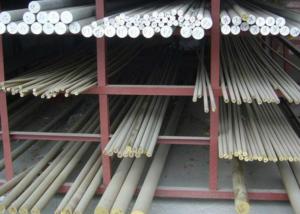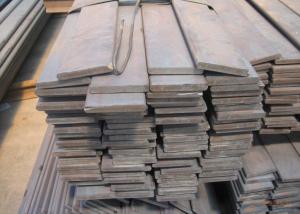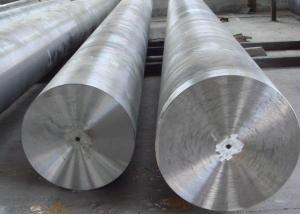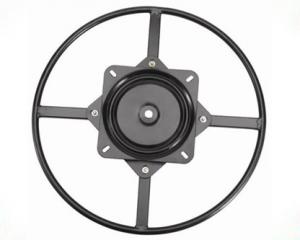HR Spring Steel
- Loading Port:
- China Main Port
- Payment Terms:
- TT or LC
- Min Order Qty:
- 50Tons m.t.
- Supply Capability:
- 600000TONS/YEAR m.t./month
OKorder Service Pledge
OKorder Financial Service
You Might Also Like
Spring Steel can be divided into two types. One is carbon spring steel, and other one is alloy spring steel.
Alloy spring steel is based on carbon spring steel, by adding one or more alloying elements to improve the mechanical properties, hardenability and other properties to meet the requirement for manufacturing all kinds of spring steel.
Specification of HR Spring Steel:
-Material: 65Mn
-Standard: GB
-Type: Spring Steel
Chemical Composition:
C | Si | Mn | S |
0.63~0.65 | 0.19~0.22 | 0.98~1.10 | ≤0.01 |
P | Cr | Ni | Cu |
≤0.014 | ≤0.2 | ≤0.02 | ≤0.05 |
Mechanical Properties:
-Tensile Strength σb (MPa): 825~925
-Yield Strength σs (MPa): 520~690
-Elongation δ10(%): 14~21.5
-Percentage reduction of area: ψ (%): ≥10
-Hardness:
1, Hot rolled: 240~270HB
2, Soft state hardness of cold rolled: 190~220HB
3, Hard state hardness of cold rolled: 300~340HB
4, Heat treatment: 38~60HRC
Usage/Applications of HR Spring Steel:
-65Mn, element Mn improves hardenability. Surface decarburizing tendency is less than silicon steel. After heat treatment, the mechanical properties are better than carbon steel.
-Spring steel of this material is usually used as flat and round spring of small size, clockwork spring, spring ring, valve spring, brake spring and so on.
Packaging & Delivery of HR Spring Steel:
-Packing Detail: The products can be packed in bundles by steel wires.
-Marks: We will paint both ends of each bundle of products to make sure that it’s more convenient for customers to distinguish their products from others, besides, we will tie tag marks to the bundles with following information: company name and logo, product name, specification, material, and so on.
-Delivery Detail:
1, Delivery time: 30~45 working days after receive buyer’s T.T. or L/C.
2, Delivery status should be written in the contract. (Heat treatment or no)
Transportation:
1, The products can be delivered by bulk vessel or by container. As for container, products with the length of 6m will be loaded in 20’ container, with 9m or 12m, in 40’ container.
2, The maximum quantity of loading of container is 25 tons.
3, The products are usually transported to the nearest port from the production place.
Photos of HR Spring Steel:
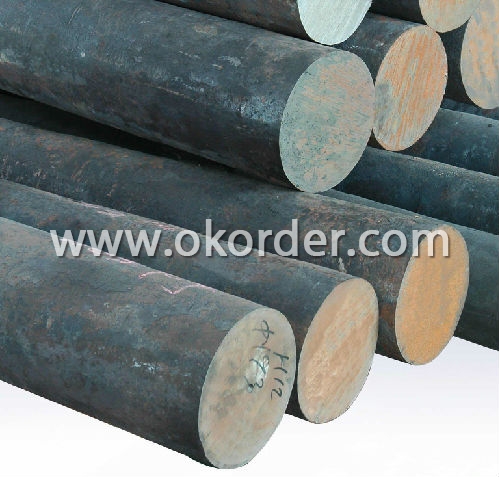

- Q:What are the different galvanizing techniques used for special steel?
- There are several galvanizing techniques used for special steel, including hot-dip galvanizing, electro-galvanizing, and mechanical galvanizing. Hot-dip galvanizing involves immersing the steel in a bath of molten zinc, creating a thick, durable coating. Electro-galvanizing, on the other hand, uses an electrical current to deposit a thin layer of zinc onto the steel surface. Mechanical galvanizing involves tumbling the steel in a zinc powder and glass bead mixture, which adheres to the surface through friction. Each technique has its own advantages and is used depending on the specific requirements of the application.
- Q:How is precipitation-hardening steel used in aerospace applications?
- Precipitation-hardening steel is used in aerospace applications due to its excellent strength-to-weight ratio, corrosion resistance, and high temperature endurance. It is commonly used to manufacture various components like aircraft landing gear, engine parts, and structural elements. The steel's ability to be heat treated and aged to enhance its mechanical properties makes it ideal for aerospace applications, where strength, durability, and lightweight materials are crucial for safe and efficient flight operations.
- Q:What are the different methods of surface polishing for special steel?
- Different methods can be used to polish special steel surfaces, each offering its own advantages and applications. These methods include mechanical polishing, electrochemical polishing, chemical polishing, electropolishing, and vibratory polishing. Mechanical polishing utilizes abrasive materials to eliminate surface imperfections and create a smooth and reflective surface. This can be done manually or with automated polishing machines. It is effective for removing scratches, dents, and other defects. Industries such as automotive, aerospace, and precision engineering commonly employ this method. Electrochemical polishing, also known as electrolytic polishing, involves using an electrolyte solution and electric current to dissolve and eliminate surface material. It is particularly useful for complex shapes and hard-to-reach areas, providing a high level of surface smoothness. This method is frequently used in industries like medical devices, semiconductors, and jewelry manufacturing. Chemical polishing selectively removes surface material and creates a smooth finish using chemical solutions. It is effective for eliminating oxide layers, stains, and contaminants. This method is often used for stainless steel and other corrosion-resistant alloys. The process involves immersing the steel in a chemical bath and controlling factors like temperature, concentration, and time. Electropolishing combines the benefits of electrochemical and chemical polishing. It applies an electric current to remove surface material while dissolving it in an electrolyte solution. Electropolishing produces a highly smooth, clean, and corrosion-resistant surface finish. It is commonly used in industries such as pharmaceuticals, food processing, and semiconductor manufacturing. Vibratory polishing utilizes vibrating media and a polishing compound to remove surface imperfections. Steel parts are placed in a vibratory tumbler or bowl, where continuous movement causes the media to rub against the parts, resulting in a polished surface. This method is commonly used for small or delicate parts and can be a cost-effective and efficient option. When choosing a surface polishing method for special steel, factors such as desired surface finish, part geometry, material properties, and industry requirements should be considered. Consulting with experts or specialists is important to determine the most suitable method for a specific application.
- Q:How does special steel compare to other materials, such as aluminum or titanium?
- Special steel is a highly versatile material that offers several advantages over other materials like aluminum or titanium. It is known for its superior strength, durability, and resistance to wear and corrosion. Compared to aluminum, special steel is typically stronger and more rigid, making it ideal for applications that require high load-bearing capabilities. In comparison to titanium, special steel often possesses similar or even greater strength, at a lower cost. Overall, special steel is highly valued for its outstanding mechanical properties, making it a preferred choice in various industries.
- Q:What are the applications of special steel in the marine sector?
- Marine grade steel, also known as special steel, finds a wide range of applications in the marine sector. Shipbuilding is one key use of this steel in the industry, as its high resistance to corrosion makes it perfect for constructing ships and other marine vessels constantly exposed to harsh weather conditions and saltwater. Another significant application of special steel in the marine sector is for offshore structures. Materials used in offshore platforms like oil rigs and wind turbines need to withstand the harsh marine environment, including corrosion, high pressure, and extreme temperatures. Special steel's exceptional strength and durability make it the preferred choice for these structures. Furthermore, special steel is employed in the manufacturing of marine equipment and components. For instance, propeller shafts, anchor chains, and underwater pipelines often use special steel due to its excellent mechanical properties and corrosion resistance. Marine engines also rely on special steel to ensure reliable performance and longevity. Moreover, special steel is utilized in the construction of port infrastructure such as piers, docks, and harbor structures. These structures must endure constant exposure to seawater, heavy loads, and dynamic forces, making special steel an ideal material choice for their construction. In conclusion, special steel plays a vital role in the marine sector with its numerous applications. Its corrosion resistance, strength, and durability make it an essential material for shipbuilding, offshore structures, marine equipment, and port infrastructure. The utilization of special steel ensures the longevity and reliability of marine assets operating in harsh marine environments.
- Q:Can special steel be used in the aerospace industry?
- Yes, special steel can be used in the aerospace industry. Special steel alloys, such as stainless steel or titanium alloys, are commonly utilized in the aerospace industry due to their high strength-to-weight ratio, corrosion resistance, and ability to withstand extreme temperatures and pressures. These properties make special steel suitable for various components in aircraft and spacecraft manufacturing, including structural elements, engine parts, landing gears, and fasteners.
- Q:How does special steel contribute to the aerospace aftermarket industry?
- Special steel plays a crucial role in the aerospace aftermarket industry by providing high-quality materials that meet the demanding requirements of aircraft maintenance and repair. It is used in various aircraft components, such as engine parts, landing gear, and structural elements, where exceptional strength, corrosion resistance, and heat resistance are necessary. Special steel ensures the durability and reliability of these components, allowing for safer and more efficient flight operations. Additionally, its use in the aerospace aftermarket industry helps reduce maintenance costs and downtime, as it enables longer-lasting and more robust aircraft components.
- Q:How is special steel used in the production of cutting tools?
- Special steel is used in the production of cutting tools due to its exceptional properties such as high hardness, toughness, and wear resistance. These qualities enable the cutting tools to effectively cut through various materials, including metal and wood, with precision and efficiency. The special steel used in the manufacturing process undergoes specific heat treatment and alloying techniques to optimize its performance and durability, making it an ideal choice for producing high-quality cutting tools.
- Q:What are the requirements for special steel used in transportation infrastructure?
- To ensure the durability, strength, and resistance to various environmental factors of special steel used in transportation infrastructure, certain requirements must be met. These requirements include: 1. High Strength: The special steel utilized in transportation infrastructure needs to possess high tensile strength to withstand heavy loads and stresses. It should be capable of resisting deformation and maintaining its structural integrity under significant pressure. 2. Corrosion Resistance: Transportation infrastructure is frequently exposed to harsh weather conditions, such as rain, humidity, and saltwater. Excellent corrosion resistance is essential for the special steel to prevent rusting and deterioration over time, particularly in bridges, tunnels, and railway tracks located near coastal areas. 3. Fatigue Resistance: Due to repetitive and cyclic loading, transportation infrastructure is susceptible to fatigue failure if the steel used is not resistant to this type of stress. To prevent cracking and failure caused by repeated loading, the special steel should possess good fatigue resistance properties. 4. Weldability: Construction and repairs are facilitated by the good weldability of the special steel used in transportation infrastructure. It should be easily weldable without compromising its strength and performance. 5. Impact Resistance: Impact loads from vehicles are exerted on transportation infrastructure, such as guardrails and crash barriers. Special steel with excellent impact resistance is necessary to absorb and distribute the energy from impacts, reducing the risk of catastrophic failure. 6. Fire Resistance: In the event of a fire, the special steel utilized in transportation infrastructure should have a high melting point and retain its structural integrity for a reasonable amount of time. This is crucial for the safety of passengers and minimizing damage caused by fire incidents. 7. Low Maintenance: To ensure cost-effectiveness and long-term sustainability, the special steel used in transportation infrastructure should require minimal maintenance. It should have a long service life and minimal need for repainting, repair, or replacement. By meeting these requirements, the special steel used in transportation infrastructure can provide a safe, reliable, and durable foundation for roads, bridges, railway tracks, and other critical components of the transportation network.
- Q:How does electrical steel contribute to the production of transformers and motors?
- Electrical steel, also known as silicon steel, plays a crucial role in the production of transformers and motors. Its unique magnetic properties, such as high permeability and low core loss, allow for efficient energy transfer and reduced power losses. This material is specifically designed to enhance magnetic induction and minimize eddy currents, ensuring optimal performance in electrical machines. By using electrical steel in the core of transformers and motors, manufacturers can increase energy efficiency, improve power transmission, and reduce overall operational costs.
1. Manufacturer Overview |
|
|---|---|
| Location | Jiangsu, China |
| Year Established | 2003 |
| Annual Output Value | Above US$ 30 Million |
| Main Markets | Asia-Pacific; Middle east |
| Company Certifications | |
2. Manufacturer Certificates |
|
|---|---|
| a) Certification Name | |
| Range | |
| Reference | |
| Validity Period | |
3. Manufacturer Capability |
|
|---|---|
| a)Trade Capacity | |
| Nearest Port | Shanghai. |
| Export Percentage | 20% - 30% |
| No.of Employees in Trade Department | 10-20 People |
| Language Spoken: | English; Chinese |
| b)Factory Information | |
| Factory Size: | Above 100,000 square meters |
| No. of Production Lines | 2 |
| Contract Manufacturing | OEM Service Offered; |
| Product Price Range | Average |
Send your message to us
HR Spring Steel
- Loading Port:
- China Main Port
- Payment Terms:
- TT or LC
- Min Order Qty:
- 50Tons m.t.
- Supply Capability:
- 600000TONS/YEAR m.t./month
OKorder Service Pledge
OKorder Financial Service
Similar products
New products
Hot products
Hot Searches
Related keywords
